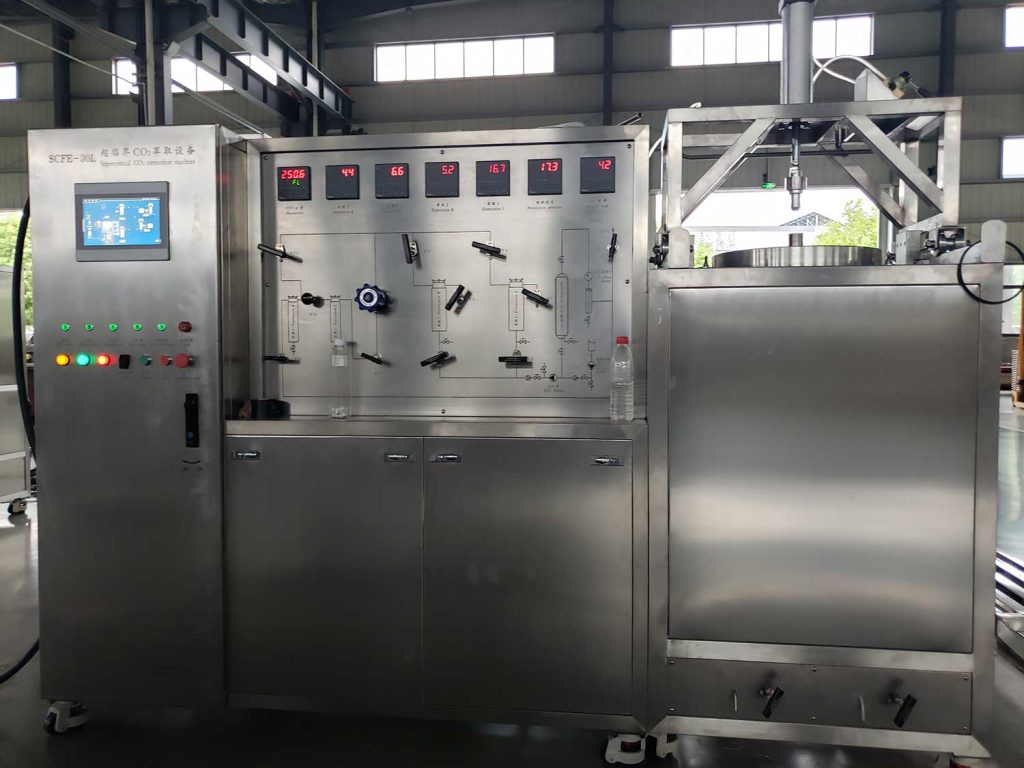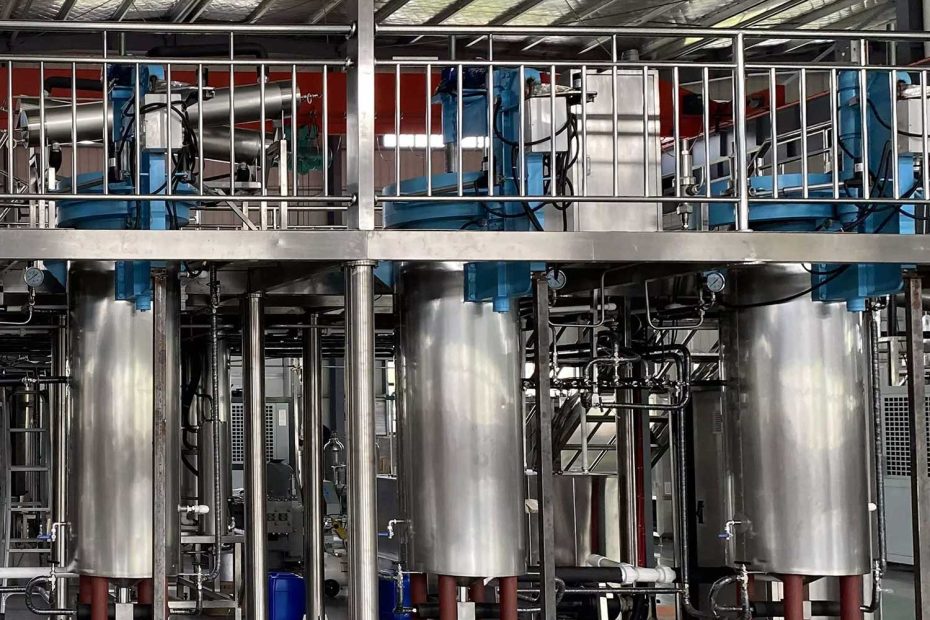At the heart of every efficient supercritical CO2 extraction process lies the extraction kettle, a marvel of engineering that forms the core of the extraction machine.
The heart of the machine is the extraction container, from which raw materials are brought in. Supercritical CO2 is pressurized and heated to a supercritical state. The design of the extraction vessel allows efficient interaction between supercritical carbon dioxide and the target compound within the material.
The Extraction Kettle: Catalyst for Precise Extraction
The extraction kettle serves as the nexus where raw materials and supercritical CO2 converge to unlock precious compounds hidden within. Functioning as the keystone of the extraction entire process, the extraction kettle’s design and engineering are paramount to ensuring consistent and controlled extraction outcomes.
The extraction kettle is the key component of the supercritical carbon dioxide extraction machine and the core of the extraction process. The vessel is carefully designed to hold the raw material and facilitate the interaction between supercritical carbon dioxide (CO2) and the target compound for efficient extraction of valuable substances. The sophisticated design and engineering of extraction vessels play a key role in achieving precise and controlled extraction results.
Key Considerations in Process Design of extraction kettle
- High-Pressure Dynamics: The extraction kettle operates under high pressures, demanding meticulous engineering to ensure mechanical stability, robustness, and safety throughout the process.
- Heat Exchange Optimization: Effective heat exchange mechanisms are vital to maintain the supercritical CO2 at the desired temperature, guaranteeing optimal extraction conditions.
- Fluid Transportation: The design must facilitate the seamless flow of supercritical CO2, ensuring efficient contact with the target compound within the raw material.
- Safety Assurance: Process design must address potential safety concerns associated with high pressures, ensuring operator well-being and equipment integrity.
Structural Elements of Extraction Kettle Design
- Material Selection: Choosing materials capable of withstanding the high-pressure environment is paramount. Advanced alloys and high-strength special steel reduce wall thickness while enhancing safety and cost-effectiveness.
- Aspect Ratio Optimization: The extraction kettle’s aspect ratio, defined by its height-to-diameter ratio, varies based on material form—solid or liquid. Precise ratios ensure effective interaction between supercritical CO2 and the target compound.

Key Points of Structural Design of Extraction Kettle
Supercritical CO2 fluid extraction kettle is one of the keys to the development of supercritical extraction technology. It needs to solve the problems of machinery, heat exchange, fluid transportation and safety guarantee caused by the process under high pressure (generally 8-35Mpa or higher). Under the premise of meeting the production purpose, it should have the characteristics of safety, easy operation, strong versatility, and continuous operation.
According to the regulations of the pressure vessel, it is a high-pressure equipment, and different extraction kettles need to be selected for different forms of materials. An important parameter of the structure of the extraction kettle is the aspect ratio. For solid materials, the aspect ratio is about 1:4~1:5, and for liquid materials, the aspect ratio is about 1:10.
Due to the high pressure of the extraction kettle, research on high-strength special steel can reduce the thickness of the kettle wall, saving materials and costs. The separation tank can be set up with one or more stages of separation according to the separation purpose, and can be combined with rectification, adsorption and other processes to achieve the purpose of extraction, separation and purification.
Scale of extraction device
Laboratory supercritical CO2 fluid extraction kettle, its volume is generally below 500mL, simple structure, no CO2 circulation equipment, pressure capacity up to 70Mpa, suitable for laboratory exploratory work. In recent years, an extractor with an extractor volume of about 2mL has been developed, which can be used directly with analytical instruments and is mainly used as a supercritical CO2 flow fluid extractor for preparing analytical samples.
Selection of extraction working mode
When the object of supercritical CO2 fluid extraction is solid material, batch operation is adopted. If a single extraction kettle is used, it takes more than one hour to raise the temperature, increase the pressure and cool down, and several hours to circulate. In order to improve production efficiency, a semi-continuous operation mode in which two or more extraction kettles are connected in parallel can be adopted, that is, when one extraction kettle is working, the other can be unloaded and loaded, and the lid of the extraction kettle should adopt a quick-opening structure to save auxiliary equipment Operating time, stabilize the composition of the extraction stream, so as to achieve the purpose of improving product quality.
Selection of separation method
For the material to be extracted, the key lies in the characteristics of difficult separation and collection, so it is necessary to choose a suitable separation method. Generally, in order to improve the separation efficiency and yield, a separation method combining two separation tanks and a fractionation column can be used to effectively separate the extract.
Conclusion
As extraction technology evolves, the extraction kettle continues to be a focal point for innovation. Integrating advancements like real-time monitoring, automation, and adaptive control systems can further enhance the efficiency and reliability of the supercritical CO2 extraction process. Such developments promise to streamline operations and offer new possibilities for precision extraction.
In the realm of supercritical CO2 fluid extraction, the process design of extraction kettles stands as a testament to the synergy between science and engineering. By addressing high-pressure dynamics, optimizing heat exchange, and ensuring fluid transportation, process design transforms the extraction kettle into a precision instrument, unlocking the potential of valuable compounds. As innovation continues to shape the landscape of extraction technology, the extraction kettle’s role in enabling efficient and controlled extraction remains at the forefront of scientific and engineering progress.
